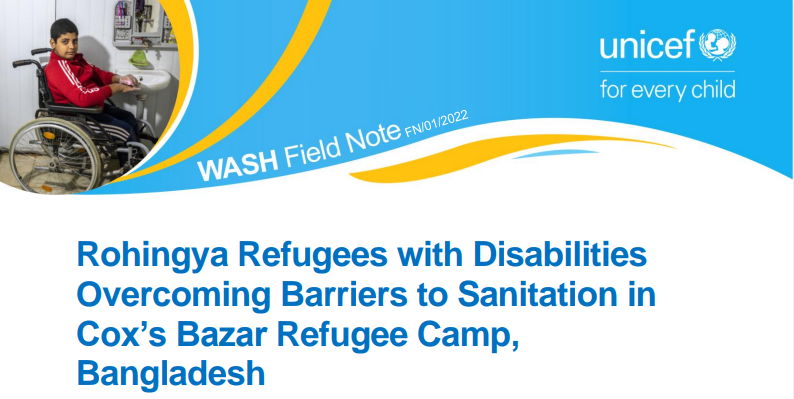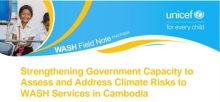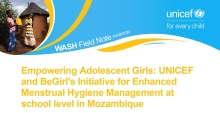Field Note: Rohingya Refugees with Disabilities Overcoming Barriers to Sanitation in Cox’s Bazar Refugee Camp, Bangladesh

Cox’s Bazar refugee camp, Bangladesh, has the highest concentration of refugees worldwide. Refugees with disabilities in the camp face challenges in accessing WASH facilities and latrines, particularly due to the hilly terrain and inaccessible locations where such facilities are located within the camps. According to a 2019 baseline survey conducted by CARE Bangladesh, over 90 per cent of persons with disabilities reported difficulties squatting on the standard pit latrines used in the camps.2 To overcome these barriers, UNICEF and CARE Bangladesh conducted a six-month field trial of new accessible latrines for persons with disabilities in Camp 16 of Cox’s Bazar District, Bangladesh. After six months, all persons with disabilities engaged in the trial were using the accessible latrines. The accessible latrines located near shelters and schools reduced the time taken to use sanitation facilities and reduced the proportion of persons with disabilities that restricted their use of latrines. The sanitation trial also increased the proportion of persons with disabilities washing their hands after defecation, from 61 per cent to 100 per cent. As a result of the introduction of accessible latrines, refugees with disabilities in the camp reported increased independence, improved self-esteem and more positive attitudes from family and community members, including reports of increased involvement in decision-making. In the six-month period, there were changes in perceptions towards persons with disabilities, indicating that improving WASH conditions for persons with disabilities can help to reduce stigma and discrimination.




